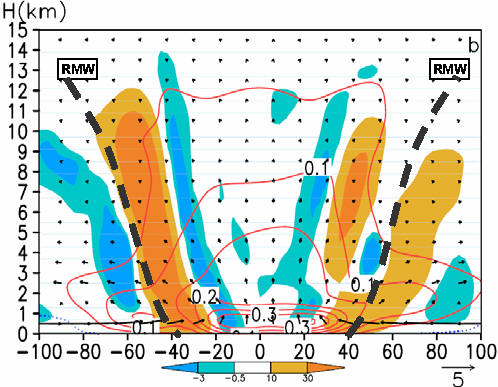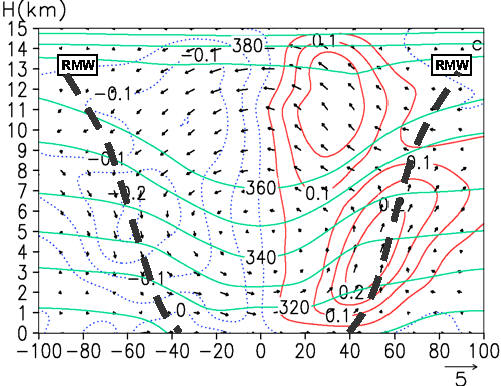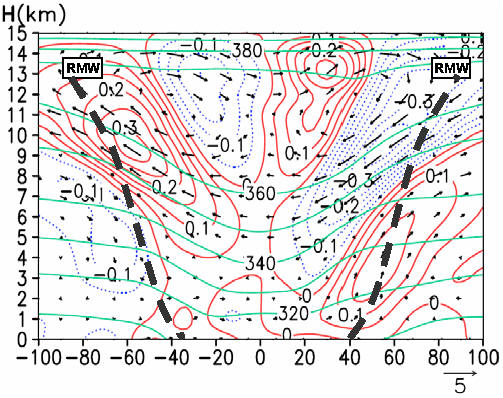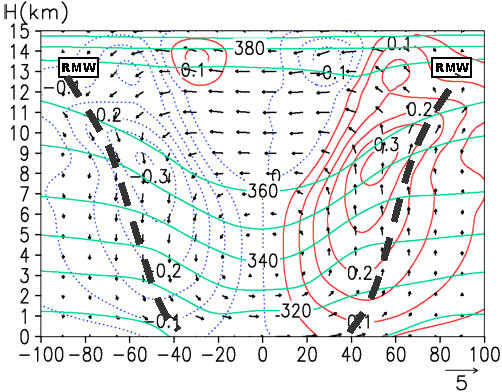Shear-forced
vertical circulations in tropical cyclones
(Zhang, D.-L. and C.Q. Kieu, 2005: Geophys. Res. Lett.,32,
L13822, doi:10.1029/2005GL023146.)
ABSTRACT
The forced secondary circulation (FSC) by the vertical shear of horizontal winds is isolated from the latent heating and friction FSCs associated with a model-simulated hurricane vortex [i.e., Andrew (1998), see Liu, Zhang and Yau 1997]. This is achieved by use of a newly developed potential vorticity inversion and quasi-balanced vertical motion equations system by Wang and Zhang (2003). Results show that latent heating forces intense updrafts in the eyewall and slow subsidence in the eye, whereas the friction-FSC is similar to that of the Ekman pumping, with the peak ascent occurring near the top of the boundary layer in the eye. In contrast, when an environmental westerly shear is superposed with an axisymmetric balanced vortex, an anticlockwise FSC appears across the inner-core region with the rising motion downshear and easterly-sheared horizontal flows in the vertical. The resulting horizontal flows act to reduce the influence of the vertical shear inside the storm by as much as 30- 40%, thus opposing the destructive roles of the vertical shear. The results have important implications to the development of wavenumber-1 asymmetries in clouds and precipitation in tropical cyclones.
Click in the figures for
an enlargement
 (a)
(a)
 (b)
(b)
 (c)
(c)
Figure 1. West-east height cross sections through the storm center of
(storm-relative) in-plane flow vectors and the vertical motion forced by (a)
latent heating (every 0.2 m s-1); (b) the PBL (every 0.05 m s-1);
and (c) the dry dynamical processes (every 0.05 m s-1), which
are obtained from the 56 – 57 h simulation of Hurricane Andrew (1998) ending 2100
UTC 23 August 1992. Shadings denote the
latent heating (orange) or cooling (blue) rates in K h-1.
Solid (dotted) lines are for upward (downward) motion,
and green lines in (c) are isentropes. Note that the vertical motion vectors
have been amplified by a factor of 5.

Figure 2. As in Fig. 1c, but for the forced secondary circulation after removing the environmental
vertical shear given in Figure 4.

Figure 3. As in Fig. 1c, but for the forced secondary circulation by a westerly shear of 10-3
s-1 associated with an axisymmetric balanced vortex.
 (a)
(a) (a)
(a) (b)
(b) (c)
(c)
